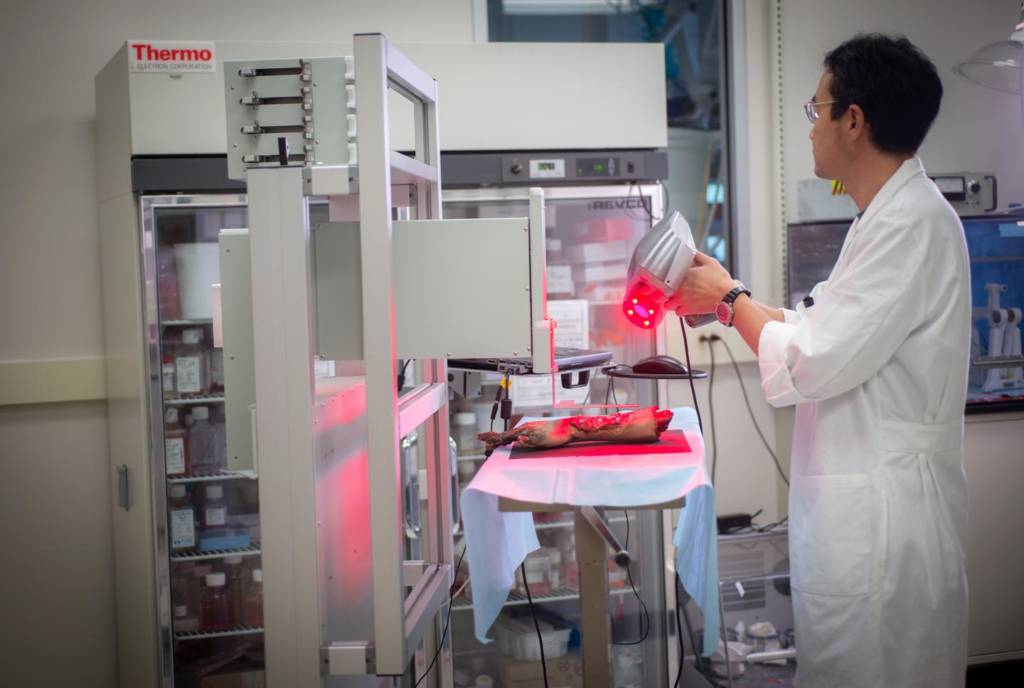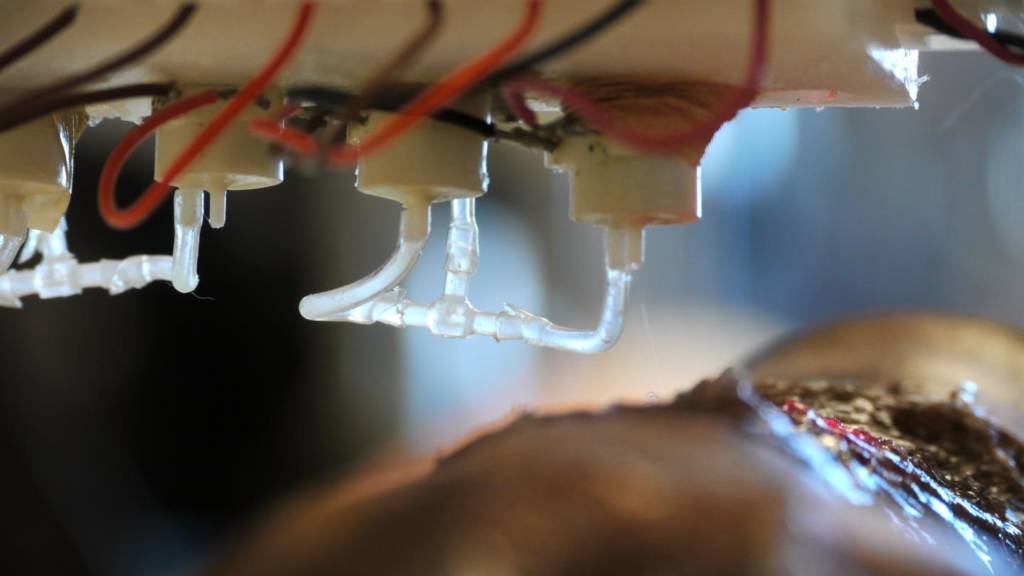US researchers have created a mobile bioprinter that could be moved ward to ward, printing skin cells to treat burns and other challenging wounds like diabetic ulcers.

Described in Scientific Reports, the device was developed by scientists at Wake Forest Institute for Regenerative Medicine (WFIRM) in North Carolina. It uses skin cells – dermal fibroblasts and epidermal keratinocytes – from the patient’s own body mixed with a hydrogel to create the printable biomaterial. Fibroblasts are cells that synthesise the extracellular matrix and collagen that play a critical role in wound healing, while keratinocytes are the predominant cells found in the epidermis, the outermost layer of the skin.
The bioprinter uses integrated imaging technology to scan the wound, then feeds this data into the software to tell the print heads which cells to deliver exactly where in the wound layer by layer. While bioprinters for wound treatment have previously been developed, the researchers claim this is the first that can be wheeled to the patient’s bedside.
“The unique aspect of this technology is the mobility of the system and the ability to provide on-site management of extensive wounds by scanning and measuring them in order to deposit the cells directly where they are needed to create skin,” said lead author Sean Murphy, a WFIRM assistant professor.

The researchers demonstrated proof-of-concept of the system by printing skin directly onto pre-clinical models. Currently, skin grafts to treat wounds and burns are the ‘gold standard’ technique, but adequate coverage of wounds can be a challenge, particularly when there is limited availability of healthy skin to harvest. Skin grafts from donors risk immune rejection of the graft and scar formation. Using their bioprinter system, the WFIRM researchers could see new skin forming outward from the centre of the wound, something that only happens when grafted cells are accepted. The next step is to conduct a clinical trial in humans.
“The technology has the potential to eliminate the need for painful skin grafts that cause further disfigurement for patients suffering from large wounds or burns,” said study co-author and WFIRM director Anthony Atala. “A mobile bioprinter that can provide on-site management of extensive wounds could help to accelerate the delivery of care and decrease costs for patients.”
